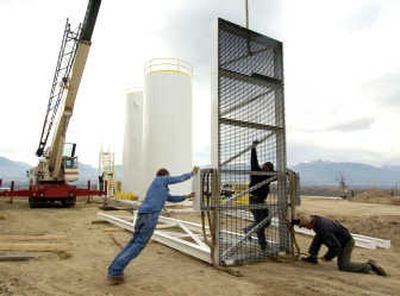Waste from dairy cows will produce electricity

CORVALLIS, Mont. – It’s not easy running a successful dairy business right in the middle of one of Montana’s fastest-growing counties.
After all, not everyone appreciates cows or their byproducts.
Dan Huls runs the largest dairy in the Bitterroot Valley on his family farm just outside of Corvallis. Every day, morning and night, he and his crews milk 350 cows.
He knows all about the challenges facing folks wanting to maintain traditional lifestyles in a countryside that often appears to be growing houses faster than crops.
“With the kind of growth we’re seeing in the Bitterroot Valley, there are many people living here who don’t understand agriculture and the production of agricultural products,” Huls said.
And their noses aren’t in tune with it, either.
In 2002, Huls started constructing a new dairy facility just above the operation his grandfather and father built back in 1951.
In the past, the dairyman loaded up a truck equipped with a 63,000-gallon tank for manure slurry. The smelly concoction was spread out across his pastures and hayfields.
Those days are about to come to an end.
As soon as a pair of towering white tanks, an electric generator and assorted gear are installed next to the milking barn, Huls will begin pumping the hundreds of pounds of manure slurry produced each day by his dairy herd into the vats – where millions of microscopic hungry bacteria will be waiting.
At the bottom of the tanks, bacteria called acidegens will start the process of breaking down the manure. The byproducts will float up where another batch of ravenous organisms called methanogens will gobble through the mash and belch out great quantities of methane as a byproduct.
When the system is up and running well, it will produce somewhere between 20 to 30 cubic feet of gas every minute, said Kevin Pack of Andigen. The Logan, Utah-based company is installing equipment at Huls’ dairy this week.
Pack said Andigen has been putting bacteria to work eating a variety of waste products to create methane gas for the past seven years in places all over the country.
Depending on what the bacteria are fed, Pack said, the methane gas will burn at 650 to 800 BTUs per cubic foot. Standard line-quality natural gas runs closer to 880 BTUs per cubic foot.
At some locations, the gas is run through scrubbers and then piped directly into natural gas lines for domestic consumption.
Huls will burn the bio-gas to generate the electricity he needs for his dairy operation. Whatever is left over will go into the local grid to be used by his neighbors and others.
Energy production is just one of many reasons Huls wanted to make this project happen.
The anaerobic digesters – Antigen calls them Induced Blanket Reactors – reduce the amount of solids coming out of the dairy operation by up to 50 percent. Pathogens don’t stand a chance inside the tanks, which are heated to 100 degrees. The water that comes out the other end makes for better fertilizer.
And for the neighbors living downwind: The process kills the odor.
“There are a bunch of environmental reasons to do this,” Pack said. “In fact, the environmental reasons are just as good as the financial reasons for most producers.”